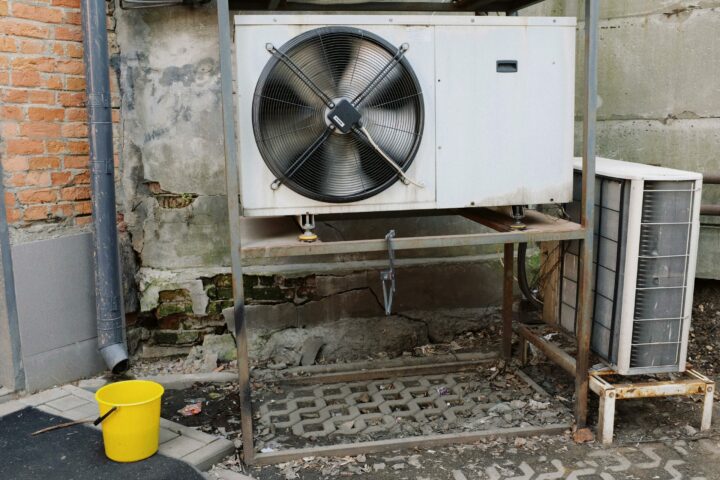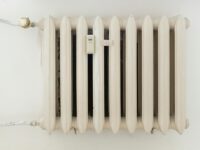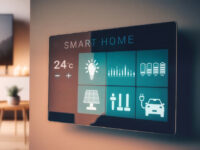The following contribution is from another author.
The Southeast United States is known for its warm climate, with hot and humid summers that can make maintaining a comfortable indoor temperature a challenge. Keeping your home cool and relaxing during these months requires a combination of strategies, from efficient use of air conditioning systems to smart home design and simple daily habits. Understanding how to effectively manage the heat can not only improve your comfort but also help you save on energy costs and reduce your environmental footprint.
Understanding the Southeast Summer Climate
Summers in the Southeast are characterized by high temperatures, often reaching the mid to high 90s, along with high humidity levels. This combination can make the air feel even hotter and more oppressive. In addition to discomfort, prolonged exposure to high heat can pose health risks, especially for vulnerable populations such as the elderly, young children, and those with preexisting health conditions. Therefore, keeping your home cool is not just about comfort but also about safety.
Maximizing Air Conditioning Efficiency
Air conditioning is the most common and effective way to keep your home cool during the summer. However, it’s essential to ensure that your AC system is running efficiently to avoid exorbitant energy bills and unnecessary strain on the unit. Start by scheduling regular maintenance for your air conditioning system. This includes cleaning or replacing filters, checking for refrigerant leaks, and ensuring that all components are in good working order. However, your air conditioner might need additional service if you live in a coastal area because ocean air carries salt which can quickly corrode components. Thus, when you get air conditioning service in John’s Island for example, you might want to consider getting a coastal coating as well.
Setting your thermostat to an optimal temperature is also crucial. The U.S. Department of Energy recommends setting your thermostat to 78°F when you are at home and need cooling. Raising the thermostat by a few degrees when you are away can result in significant energy savings. Programmable thermostats can help automate this process, adjusting the temperature according to your schedule.
Another way to enhance your air conditioning efficiency is by ensuring your home is well-insulated. Proper insulation helps keep the cool air inside and prevents the hot outdoor air from infiltrating your home. Check for drafts around windows and doors and consider adding weatherstripping or caulking to seal any gaps. Adding insulation to your attic and walls can also make a significant difference.
Using Fans and Ventilation
Fans are a cost-effective way to supplement your air conditioning system and improve air circulation in your home. Ceiling fans can help distribute the cool air more evenly, making you feel cooler without having to lower the thermostat. In rooms that are not regularly occupied, using a fan can provide adequate cooling without the need to run the AC continuously.
Ventilation is another key factor in maintaining a comfortable indoor temperature. Use exhaust fans in the kitchen and bathroom to remove hot, humid air generated by cooking and showering. Additionally, opening windows in the early morning or late evening when the outdoor temperature is cooler can help ventilate your home and expel the hot air that has accumulated during the day.
Managing Humidity Levels
Humidity can make high temperatures feel even more unbearable. Managing the humidity levels in your home is crucial for maintaining comfort. Dehumidifiers can be an effective tool in reducing indoor humidity, especially in areas prone to high moisture levels, such as basements and bathrooms. Running your air conditioner can also help dehumidify the air, as it removes moisture while cooling.
Using moisture-absorbing materials like desiccant packs or silica gel in closets and small spaces can also help manage humidity. Additionally, consider installing a whole-house dehumidifier if you live in an area with persistently high humidity levels.
Smart Home Design and Landscaping
The design and layout of your home can have a significant impact on its ability to stay cool during the summer. Homes with large windows facing the sun are more likely to heat up quickly. Using shades, blinds, or curtains can help block out the sun’s heat. Reflective window films can also reduce heat gain while still allowing natural light to enter.
Landscaping can play a crucial role in keeping your home cool. Planting trees and shrubs around your home can provide natural shade, reducing the amount of direct sunlight that hits your windows and walls. Deciduous trees are particularly effective because they provide shade in the summer and allow sunlight to warm your home in the winter after they shed their leaves.
Daily Habits for Staying Cool
Simple daily habits can make a significant difference in maintaining a comfortable indoor temperature. For instance, avoiding the use of heat-generating appliances during the hottest parts of the day can help keep your home cooler. Use the microwave or outdoor grill for cooking instead of the oven or stove, and run the dishwasher and clothes dryer in the evening when temperatures are lower.
Wearing light, breathable clothing and using light bedding can also help you stay cool. Taking cool showers and staying hydrated are important for regulating your body temperature and preventing heat-related illnesses.
The Importance of Professional Maintenance
To ensure your air conditioning system runs efficiently throughout the summer, it’s essential to have it serviced by a professional. Regular maintenance can identify and fix potential issues before they become major problems, saving you from unexpected breakdowns and costly repairs. A professional can also provide valuable advice on optimizing your system’s performance and improving your home’s overall energy efficiency.
Investing in a professional home energy audit can provide insights into how well your home retains cool air and where improvements can be made. An audit typically includes an assessment of your insulation, ductwork, and HVAC system, along with recommendations for upgrades or repairs.
Conclusion
Keeping your home at a relaxing temperature during the hot and humid summers in the Southeast U.S. requires a combination of efficient air conditioning use, proper ventilation, humidity management, and smart home design. By adopting these strategies and making small adjustments to your daily habits, you can enjoy a comfortable and cool indoor environment all summer long. Prioritizing regular maintenance and professional services can further enhance your home’s cooling efficiency, ensuring that you stay comfortable while also saving on energy costs.
















